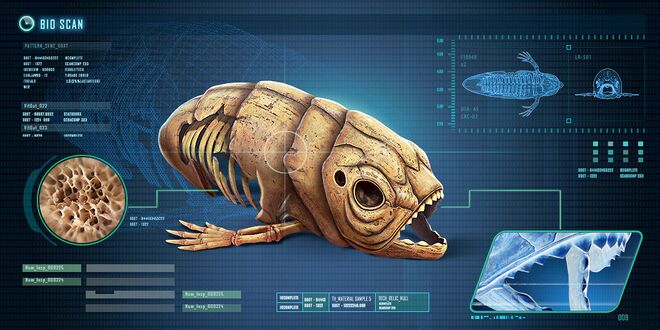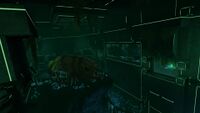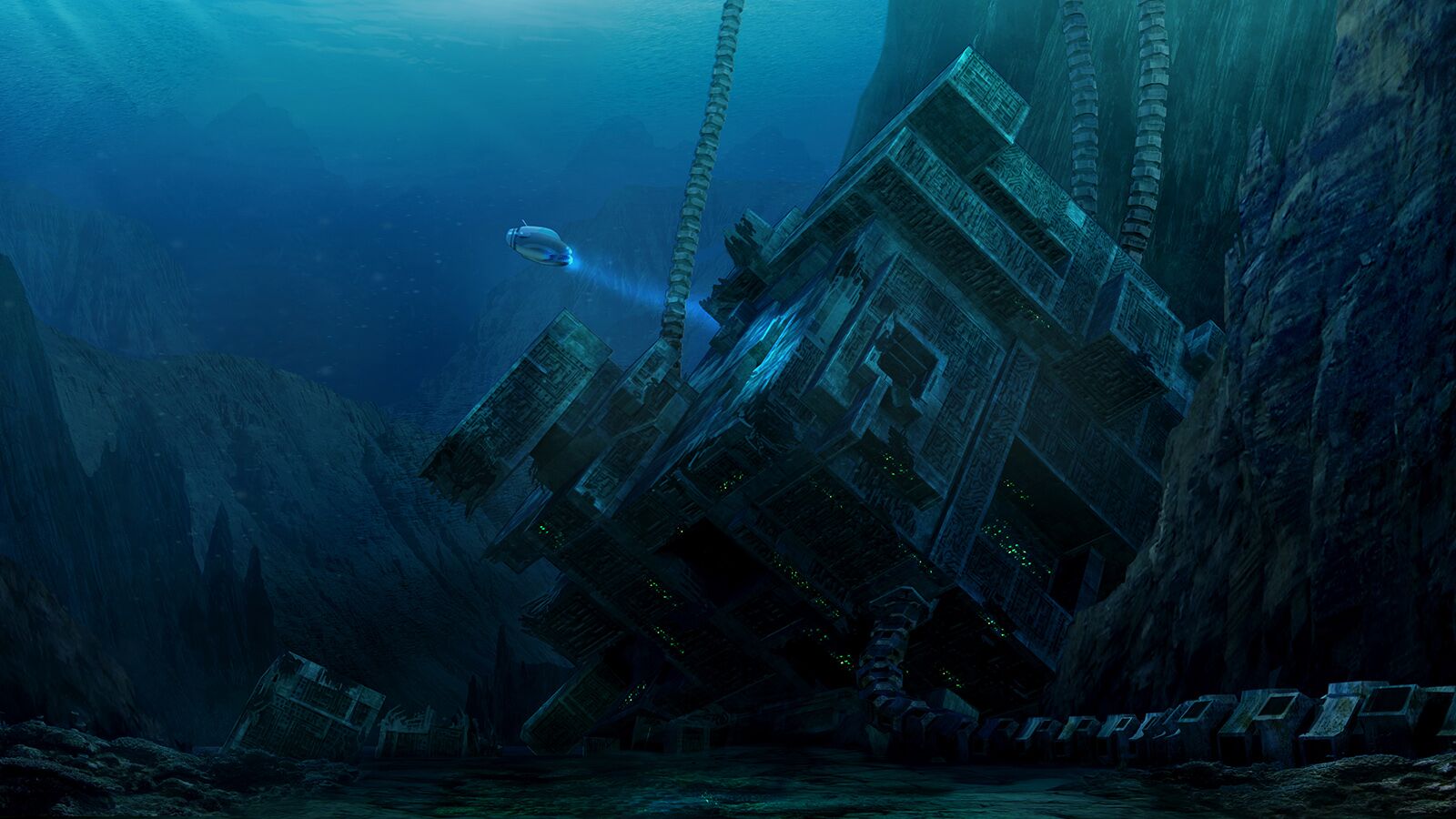Research Specimen: Difference between revisions
(I doubt its antennae were just the bulb without any stalk) |
No edit summary |
||
| Line 98: | Line 98: | ||
[[Category:Extinct Species]] |
[[Category:Extinct Species]] |
||
[[Category:Disease Research Facility]] |
[[Category:Disease Research Facility]] |
||
<center><div style="position: fixed; display: block; margin-left: auto; margin-right: auto; width: 100%; top: -20px; left: 0px; z-index: -1">[[File:Precursorlostriver.jpg|center|2000x2000px]]</div> |
|||
Revision as of 06:11, 16 March 2023

|
Read at own risk This article contains unmarked spoilers. Players new to the game would want to avoid or be cautious toward this article. |
<infobox layout="stacked">
<title source="title" style="font-weight:bold; text-align:center;"> <default>Research Specimen</default> </title> <image source="image">
</image> <label>Age</label> <label>Status</label> <label>Biome</label> <label>Length</label> <label>Coordinates</label> <label>GoTo</label> <label>Debug Spawn</label> </infobox> Research Specimen Theta, also referred to as Large Carnivore Theta was an individual of a large predatory species kept in the main aquarium of the Disease Research Facility for a long period of time for testing purposes. It is implied by a data bank entry that this individual died prior to the Kharaa outbreak, as in a Precursor data entry it is referred to as "Remains" being studied. The individual likely succumbed to Kharaa, to which it showed some level of resistance. This specimen is distantly related to five species still living on the planet today; the PDA notes shared skeletal traits with the Biter and Sand Shark, by extension this also makes Research Specimen Theta a relative of the Boneshark and Blighter, and a very distant relative of the Rockgrub.
Forearms
The forearms are unique amongst its relatives and seem to have evolved independently as there is very little chance of relation to the Sea Emperor and Sea Dragon group due to major skeletal differences. The structure of the arms also differs greatly between them; whilst the Sea Dragon's - and presumably the Sea Emperor's - arms follow a more familiar structure with a ball and socket joint at the elbow, one upper bone; the humerus, and two lower bones; the radius and ulna, Theta's arms are unique, with the humerus' equivalent made from two fused bones of equal size running parallel to each other, and rather than the ball and socket joint seen in the elbow of the Sea Dragon, it has a gliding joint composed of carpal bones. It also has five-digit hands rather than the Sea Dragon's four-digit hands.
The arms appear similar to a whale fin in shape and size, though since the PDA states they were forearms it is likely they were indeed arms with webbed hands on the end rather than fins. Although, the fact that they face backward rather than forwards would have made them impossible to use as graspers like the Sea Dragon Leviathan. It is possible that these forearms were a large pair of flippers, like those of a sea turtle, which helped propel itself through the water.
Eyes
The secondary eyes appear considerably smaller and less developed than those found on the Sand Shark and Biter, which are indistinguishable from the front set of eyes in size and appearance. It can also be noted that the Boneshark lacks double eye sockets as well as any indication of their prior existence, meaning that the Boneshark must have diverged sooner than the others. Whilst Theta's lineage appears to have split early in the development of the double eye sockets, retaining a primitive second pair of eyes.
Shell
A solid external shell, as well as an internal skeleton, is commonplace amongst this group, with the Sand Shark, Boneshark, Theta, and presumably the Rockgrub all exhibiting this adaptation, showing a preference for defensive capability over maneuverability in all species aside from the Biter and Blighter, which appear to have lost the external shell over time in favor of greater agility. It also has two small holes above its primary eyes, indicating that it may have had two antenna on its head like those found on its more agile relatives. Judging by the size and placement of those holes, the antenna were most likely thinner and longer.
Data Bank Entry
<tabber> Research Specimen Theta=
|
The skeletal remains of a vast predator, housed within an artificial habitat. 1. Habitat: 2. Evolution: |
|-| Specimen Research Data=
|
A catalog of information on the organisms previously contained within the alien facility. A number of entries have been translated. Small Herbivore Gamma: Leviathan Embryos: Large Carnivore Theta: Unidentified Leviathan: Assessment: While it is unlikely that the emperor specimen is still contained within the facility described, it may be possible to acquire further data there on the aliens' attempts to develop a vaccine. |
</tabber>
Gallery
<tabber> In-Game=
|-| Models=
</tabber>
Lua error in package.lua at line 80: module 'Dev:Navbox' not found.






